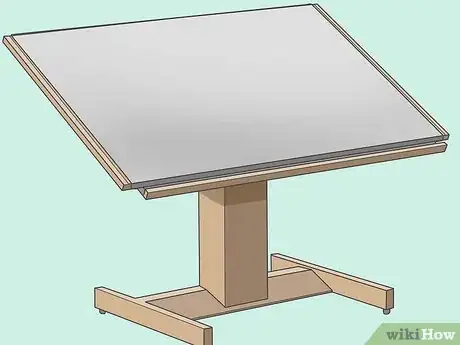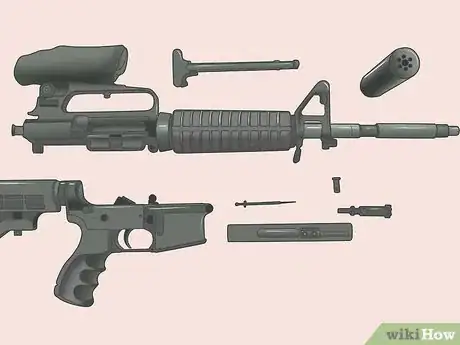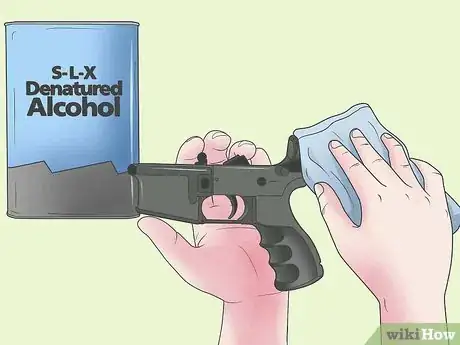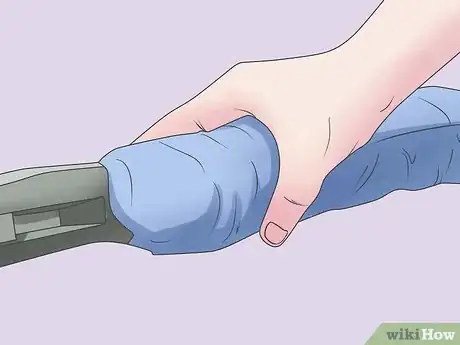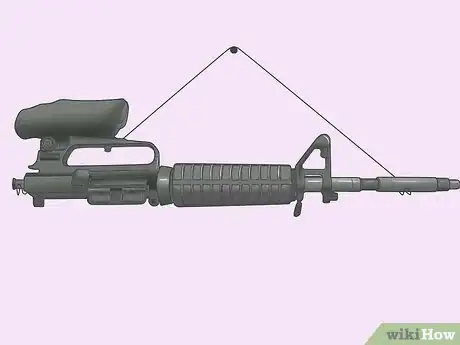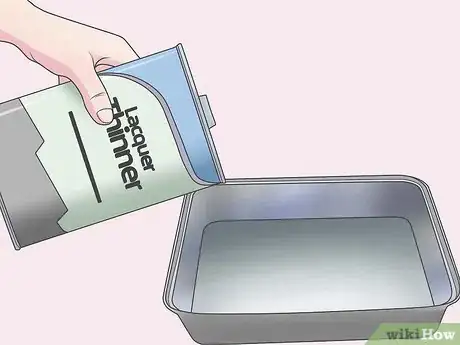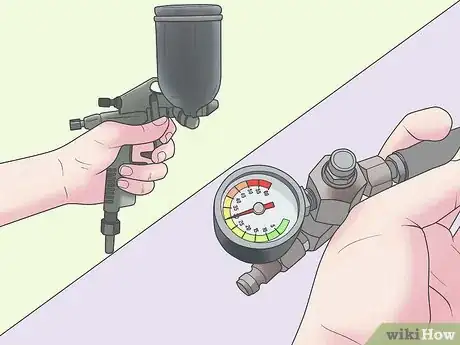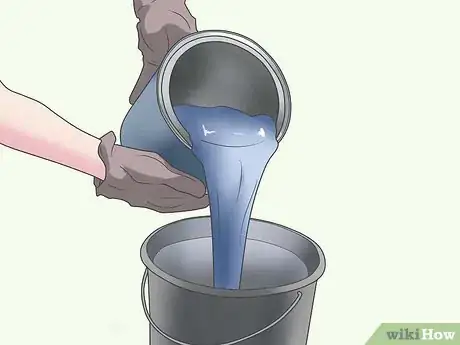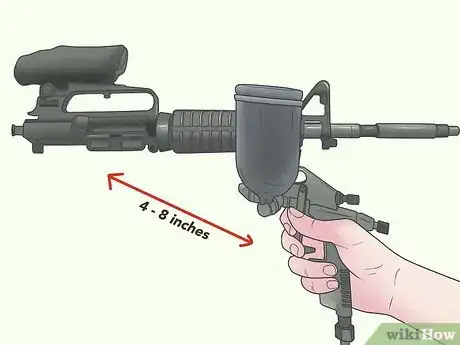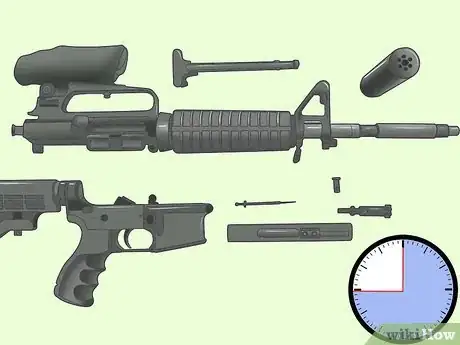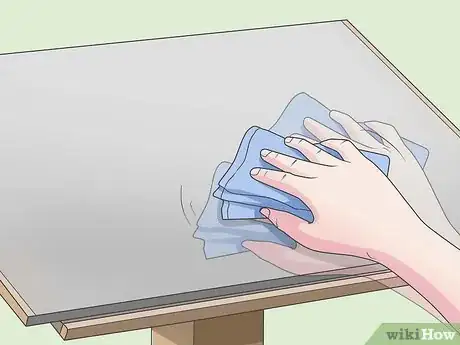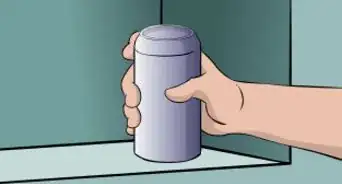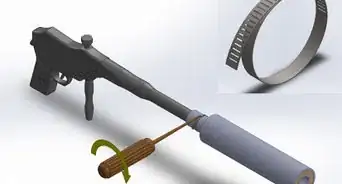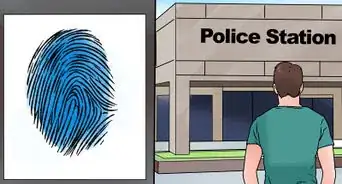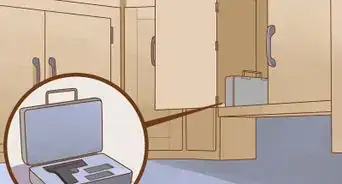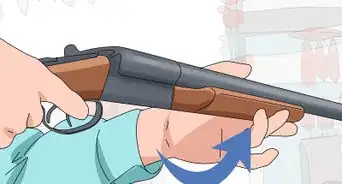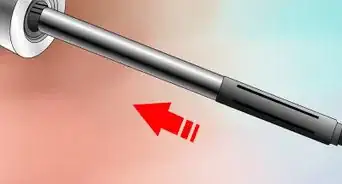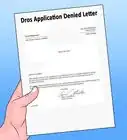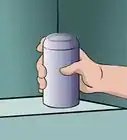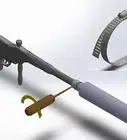X
wikiHow is a “wiki,” similar to Wikipedia, which means that many of our articles are co-written by multiple authors. To create this article, volunteer authors worked to edit and improve it over time.
This article has been viewed 98,590 times.
Learn more...
Duracoat is a 2-part chemical spray finish designed specifically for use on firearms. Used extensively by hobby firearms makers, it is available in 75 colors as well as a clear gloss. The colors can be mixed in any combination to achieve a truly unique color. While applying Duracoat itself is not a laborious process, the prep work must be done meticulously to ensure a near flawless finish.
Steps
-
1Cover the surface where you will be working with newspaper.
-
2Dis-assemble the entire firearm and clean all pieces thoroughly, making sure there is no trace of oil on any piece.
- One of the best cleaners you can use for this job is MEK or methyl ethyl ketone, an industrial solvent. Pour MEK into a disposable aluminum foil pan and soak the parts. If necessary, use air pressure, brushes or rags to reach every surface of the firearm.
Advertisement -
3Use denatured alcohol for a final wipe down of the parts. Even a single drop of oil will cause the Duracoat to peel.
-
4Use blue painter's tape to mask off any parts that will not be painted.
-
5Snip pieces of the wire to make hooks to hang the parts to dry. This will also facilitate spraying Duracoat and allowing drying time between coats.
- A pegboard will work as a holder for hanging the parts. Cover the pegboard with heavy plastic to protect the surface from over spray.
-
6Pour lacquer thinner into a foil pan. In case of a painting mistake, dip the part into the pan to remove the paint. You can also use it to clear the air-sprayer tip if necessary or to clean your hands of excess paint.
-
7Set up the air sprayer and set the compressor to 30 psi.
-
8Mix the Duracoat paints to get the color you desire. Test spray on a scrap piece of metal to check color.
-
9Combine 1 part Duracoat Hardener to 12 parts Duracoat paint. Shake thoroughly for at least 3 minutes, and pour into the paint receptacle on the air-sprayer.
-
10Hold spray tip 4 to 8 inches (10.2 to 20.3 cm) from the parts and spray Duracoat with sweeping passes from left to right. You can go back for another pass or 2 before allowing it to dry. The ideal final thickness of Duracoat should be 1 mil, applied in 1 to 3 passes.
- When spraying Duracoat on parts that receive more wear, such as parts that rub against holsters and slings, aim for a coating 1.5 mil for added endurance.
-
11Set parts aside to dry and cure. They will be dry enough for light use in 24 hours, but ideally they should be allowed to dry for 2 weeks.
-
12Clean up work area. Do not dispose of Duracoat and other chemicals in sewer lines. If you will not use up the Duracoat within 18 months, take to a licensed disposal facility.
Advertisement
Community Q&A
-
QuestionWhat is the working time for mixed paint, to allow for more coats?
 Community AnswerDepending on what type of paint you have, it can be anywhere from 10 to 60 minutes.
Community AnswerDepending on what type of paint you have, it can be anywhere from 10 to 60 minutes. -
QuestionThe first spray came out perfectly, but I had to turn the barrel, and now the paint is separating. What did I do wrong?
 RajajeyamCommunity AnswerDon't apply oil-based paint over latex; but you can put latex paint over oil-based, as long as you prepare the surface properly first. Start by finding out if the existing paint is oil or latex by rubbing the surface with denatured alcohol on a rag. If some of the paint comes off on the rag, it's latex.
RajajeyamCommunity AnswerDon't apply oil-based paint over latex; but you can put latex paint over oil-based, as long as you prepare the surface properly first. Start by finding out if the existing paint is oil or latex by rubbing the surface with denatured alcohol on a rag. If some of the paint comes off on the rag, it's latex.
Advertisement
Warnings
- Remove any containers of silicon from the area before spraying Duracoat as it causes Duracoat to bubble, even if it is in a sealed container in the same room.⧼thumbs_response⧽
- Do not use Duracoat indoors. If used in outbuildings such as a garage, make sure the overhead doors are open and there is good ventilation. A fan set in a window and forcing the inside air outside will work.⧼thumbs_response⧽
Advertisement
Things You'll Need
- MEK paint stripper
- Denatured alcohol
- Duracoat colors of your choice
- Duracoat hardener
- Newspaper
- Aluminum foil pans
- Lacquer thinner
- Spool of wire or wire coat hanger
- Wire cutters
- Peg board
- Heavy plastic sheet
- Paper towels
- Foam or bristle paint brushes
- Blue painter's tape
- Utility knife
- Latex gloves
- Respirator
- Eye protection
- Rags
About This Article
Advertisement
